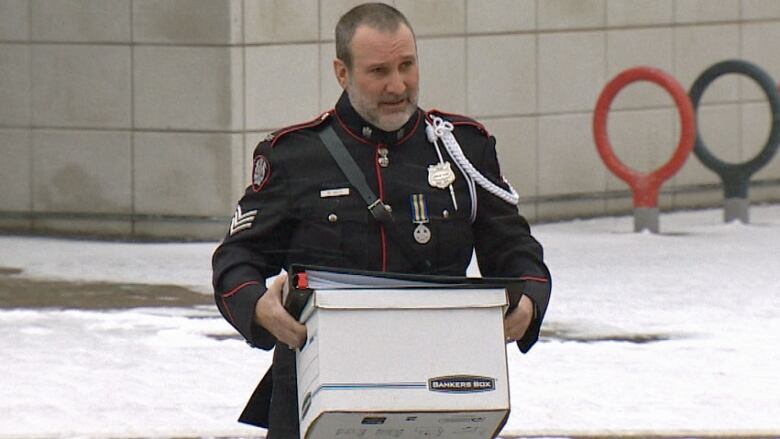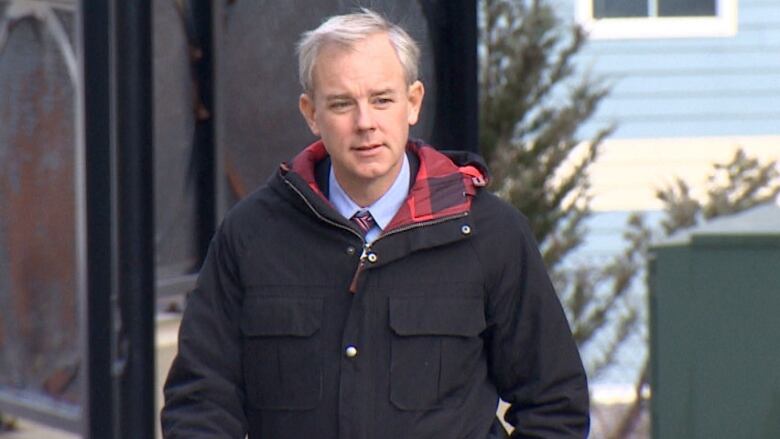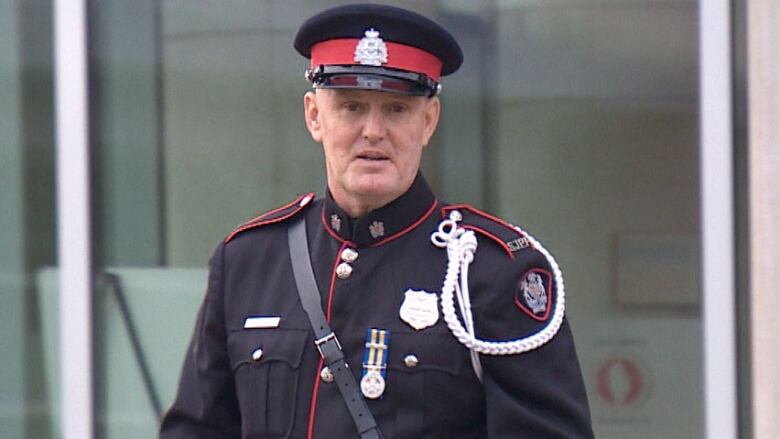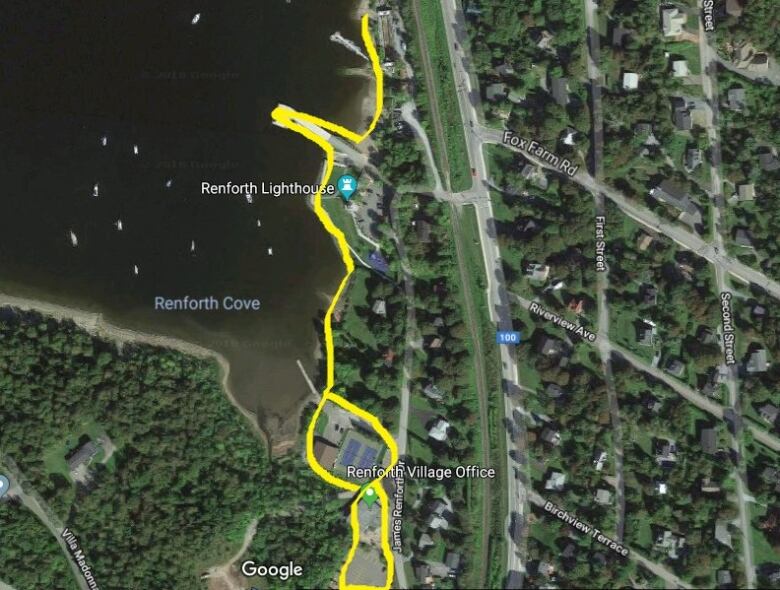Forensic officer gave in to superiors who 'wished to view' Oland's body
Sgt. Mark Smith was already 'frustrated' about officers entering bloody crime scene, murder retrial hears

The head of the Saint John Police Force's forensic identification section says he gave in to "several" senior officers who "wished to view"Richard Oland'sbludgeoned body before he had processed the bloody crime scene for evidence.
Sgt. Mark Smith testified Thursday at Dennis Oland's murder retrial that "nobody actually pulled rank" on him on July 7, 2011.
But"I'vebeen onthepolice force long enough that, if the staff sergeant and inspector and whomever else asks to view the body,youjust stop saying no," he said.
"I just said, 'Goahead.'Iactuallyvoicedmy frustration after that and sarcastically said, you know, 'Did anybody else need to get in here to see this?'"
- On mobile?Follow the live blog here
Oland, 50, is being retried for second-degree murder in his father's killing.
The 69-year-old multimillionaire was found lying face down in a large pool of blood in his blood-spattered office at 52 Canterbury St. He had suffered more than 40 blows to his head, neck and hands. No weapon was ever found.
His son was the last known person to see him alive during a meeting at his office the night before. A jury found him guilty in December 2015, but the New Brunswick Court of Appeal overturned the conviction in October 2016 and ordered a new trial, citing an error in the trial judge's instructions to the jury.

Smith testified hewas already "frustrated" when the senior officers, including former deputy chief GlenMcCloskey, now-retired staff sergeant Mike King, Sgt. DaveBrooker, and possibly "somebody else too"asked to view the body because other officers had previously entered the crime scene.
It was a topic of "ongoing discussion" between forensics and the major crime unit, he said.
"I wished to have everybody remain outside of the scene until wewere completely finished our job. And thatwasn't the view of major crime at the time."
I didn't think I needed to say anything to anybody in relation to the scene.- Mark Smith, forensics sergeant
When Smith had left earlierto retrieve some equipment and supplies from the police station, he did not give any instructions to the number of officers who were in the foyer outside the second-floor office.
"I didn't think I needed to say anything to anybody in relation to the scene," he said. "That was my assumption, wrongly, that nobody go in the scene, leave that to me."
"I would expect that they would continue to guard the scene and not touch anything."
Not wearing protective gear
Smith said he instructed the senior officers to follow the same route he took into the office andnot to go beyond a certain point. He also pointed out two bloodstains on the floor, he said.
They were only in the office for "a few seconds" before retracing their steps anddid not touch or move anything, he said.
Smith was wearing full protective gear at the time coveralls, booties, gloves and a mask, buttold the court he was not wearing any protective gear the first time he entered the office, around 10 a.m.
He knew the ambulance attendants and the witnesses who discovered the body had taken a certain route in, he said, so he followed that same route.
He only entered far enough to assess the situation and determine what additional equipment and supplies he needed before returning around 11:20 a.m., he said
Part of possible 'escape route' not searched
On Wednesday, the court heard adog handler did not search part of a possible "escape route" Oland'sdefence lawyers contend the"killer or killers" could have used.
RetiredConst. MikeHorgantestified he spent up to 25 minutes in the alleyway behind the victim's office building.
Horganand hisdog Leo found no evidence or human scent to follow.
But he didn't search the roof of a small garage in the alleyway or the area beyond because he said he couldn't access it with his dog.
Last week, the defence playeda video enactment for the court to demonstrate how someone could have exited the rear of the building,hopped on top of thegarage, climbed over a low retaining wall to the backyard of an adjacent property, turned leftdown a narrow passageway between two buildings,opened a wooden gate at the end andexited ontoGermainStreet.
The defenceargues the back door would have been the preferred exit for akillerbecause it'sthe most clandestine.

Defence lawyer Michael Lacy suggested to the dog handler he could have gained access tothe unsearched area around the garage another way, or asked another officer to do that part of the search.
Horgan didn't ask for help, but his search of the first stretch of the defence's posited escape route between the back door and the garage turned up"nothing whatsoever," the courtroom heard.
Horganand his sniffer dog also searched the full city block around the office building that day, including parking lots and sidewalks, but didn't find any evidence.
The two funeral home employees who helped remove Oland's body from his second-storey officetestified police never told them about the back exit.
Sharlene MacDonaldand Adam Holly struggled instead to carry the "heavy-set" victim on a stretcher down a long, steep, narrow staircase at the front of the building.
The back would have beeneasier to manoeuvre because the building is constructed on a slope, so the rear exit's almost at ground level, with only two steps, they said.

It also would have been more discreet, said Holly.
The back door was never tested for forensic evidence because someone opened it after the body was discovered and contaminated it, the trial has heard.
On July 8, 2011, Horgan was called in on his day off to search the RenforthWharf area, where Dennis Olandtold police he had stopped on his way home from visiting his father.
Lacy suggested Horgan was instructed to look for a possible murder weapon, but hesaid hewas only told to search the area for evidence.

Horgan and Leo also searched the grounds of the accused's home at 58 Gondola Point Rd., inRothesayon July 14, 2011, when police executed a search warrant.
That search took about two hours.
Click here for CBC New Brunswick's complete coverage of the Dennis Oland murder retrial













_(720p).jpg)


 OFFICIAL HD MUSIC VIDEO.jpg)
.jpg)



























































































